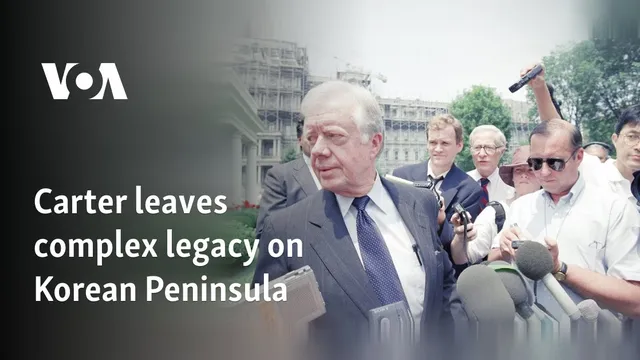
Did Jimmy Carter save the US from disaster in North Korea?
2025-01-03 16:24- A significant winter storm is expected to cause snow and ice across the eastern U.S.
- The storm is likely to bring severe conditions, including heavy snowfall and dangerous icing.
- Meteorologists warn that this could lead to one of the coldest Januarys in decades.
Express your sentiment!
Insights
Beginning Saturday, January 4, 2025, a significant snow and ice storm is set to impact the eastern two-thirds of the United States, with frigid air migrating south from the Arctic region. Meteorologists warn of moderate to heavy snowfall affecting areas from Kansas City to Washington, D.C., with central Kansas and Indiana projected to receive at least eight inches. Additionally, severe icing conditions bringing potential power outages are expected to affect southern Kansas, Missouri, Illinois, Indiana, Kentucky, and West Virginia. Wind gusts could reach upwards of 50 mph, increasing blizzard conditions in Kansas and nearby regions. As the storm progresses, frigid temperatures could be 12 to 25 degrees Fahrenheit below normal, leading to a prolonged stretch of dangerously cold weather. This situation has the potential to create the coldest January for the United States since 2011, as the polar vortex is drawn southward. It is also particularly noteworthy that this severe weather might have ties to climate change, as the shift in temperatures and Arctic sea ice loss influences jet stream behaviors, allowing for extreme winter weather in regions like the Gulf Coast, which are typically not subject to such severe conditions. Meteorologists describe this event as a reminder of the impacts of climate change on winter weather patterns, leading to extreme cold snaps despite a globally warming climate.
Contexts
Climate change has significantly impacted winter weather patterns across the globe, leading to a series of complex and interrelated consequences. Increased atmospheric temperatures, driven by elevated greenhouse gas levels, have altered the traditional behaviors of winter systems. This results in not only warmer winters, but also unpredictable shifts in precipitation types, with regions experiencing more rain than snow. These changes are attributed to the fundamental physics of warming air, which can hold more moisture and manifest in more intense weather events. Consequently, our understanding of winter weather begins to incorporate a framework that accounts for these climatic shifts, forecasting challenges, and the adaptability of ecosystems to changing seasonal dynamics. One critical aspect of these changing patterns is the phenomenon of the polar vortex, which refers to the circulation of strong winds around the polar regions. As temperatures in the Arctic rise, the stability of the polar vortex can be disrupted, leading to the southward displacement of cold Arctic air into mid-latitude regions. This juncture often results in extreme cold spells and unpredictable snow events that can have profound implications for local weather systems. For example, areas traditionally shielded from severe winter conditions may face unexpected stretches of cold, leading to infrastructure challenges and disruptions in local economies. This added unpredictability emphasizes the urgent need for communities to bolster their preparedness for extreme weather episodes. Moreover, changes in winter precipitation are not only impacting human infrastructure but also seriously affecting natural ecosystems. Many species are adapted to specific winter conditions for survival, such as those relying on snow cover for insulation or as a hunting ground. The shift from snow to rain in some regions has dire consequences, including altered habitats, altered food availability, and disruption of breeding cycles. Additionally, the reduction in snowpack affects freshwater supply as many ecosystems depend on melted snow to create streams and rivers during warmer months. If these trends persist, biodiversity risks and the health of various habitats will likely be compromised. In summary, the impacts of climate change on winter weather patterns present a critical area of study that necessitates immediate attention and action. The interplay between rising global temperatures, altered precipitation, and ecosystem response creates a complex web of challenges for scientists and policymakers alike. Understanding these patterns will not only enhance predictive capabilities but will be essential for developing effective mitigation strategies aimed at reducing vulnerability to winter weather extremes. A comprehensive approach that integrates scientific research, community engagement, and sustainable practices is necessary to manage the ramifications of climate change on winter weather and to safeguard the future of both human and natural systems.